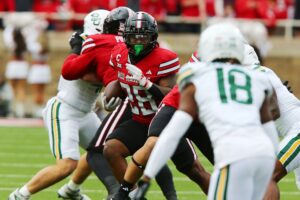In this first of this three-part series, we will look at the early modern era of West Virginia football and the Don Nehlen era to begin providing the deeper backdrop against which any current or future West Virginia football programs might best be judged. Ultimately, the purpose of the series is to examine just how high the Mountaineers have climbed under Head Coach Dana Holgorsen and to consider how much higher they might still climb during his tenure.
Rome was not built in a day. As it turns out, neither are sustainably successful college football programs. Look at Kansas State, for example. Kansas State was a perennial cellar dweller prior to Head Coach Bill Snyder’s arrival. In the 20 seasons predating Snyder, Kansas State had as many zero- or one-win seasons (five) as it did seasons with five or more wins. Yet, as successful as Snyder was, it still took him seven years to produce his first ten-win season. Fans should keep this in mind as we ask, just how high will the Mountaineers climb under Head Coach Dana Holgorsen.
West Virginia History 1941-1979
Prior to the 1941 season, West Virginia had never played an AP-ranked team. On October 18, 1941, that changed when the Mountaineers visited Fordham and returned home with a 27-0 loss. It took 11 years and eight attempts for the Mountaineers to finally prevail in a game against an AP-ranked opponent. Fittingly, on October 25, 1952, West Virginia beat Pitt on the road 16-0. The next season, West Virginia saw its first AP ranking itself, and it peaked at fifth. They finished the season ranked 10th. West Virginia finished the next two seasons ranked in the top 20.
The Mountaineers did not finish another season in the AP rankings until Jim Carlen’s final season in Morgantown in 1969 when the Mountaineers finished 17th. In 1970, a young Bobby Bowden took over as West Virginia’s head coach and led the team to winning records in five of his six seasons. Bowden also brought the Mountaineers back into the AP rankings several times during his tenure, finally finishing the 1975 season ranked 20th.
It was not until the 1973 season that the Mountaineers would consistently face opponents now considered “Power Five” teams. West Virginia’s season-by-season strength of schedule ratings, as shown on Sports Reference, reflect that. West Virginia did not consistently play a strength of schedule above average until that season.
During the next four years under Frank Cignetti, the Mountaineers would only see the AP poll one time, and it did not finish any season in the top 25. The Mountaineers never appeared in a bowl during Cignetti’s era.
Enter Don Nehlen
Most Mountaineer fans credit Don Nehlen with putting their program “on the map.” And while Bowden, Carlen, and Art “Pappy” Lewis each deserves credit for sustaining moderate success in Morgantown during their respective tenures, the sentiment that Mountaineer Nation owes Nehlen such tribute rings true.
The Mountaineers appeared in more bowl games (thirteen) during Nehlen’s twenty-one-year tenure between 1980 and 2000 than all other coaches before him combined (eight). Nehlen finished more seasons (six) in the AP top 25 than all other coaches before him combined (five). He also guided nine different teams to seasons with eight or more wins, equaling the total between 1948 (the first eleven-game season the Mountaineers played) and 1979.
Nehlen brought the Mountaineers their tenth win over an AP-ranked team on September 11, 1982, when West Virginia beat Oklahoma on the road 41-27. Notably, the Mountaineers record against AP-ranked teams through this tenth win was 10-44. It took West Virginia 54 games to win 10. Nehlen, however, won his tenth game against a ranked opponent in 1993. It took him only 36 games. While still meager, 10-26 looks much better than 10-44.
Indeed, Nehlen brought a team that was playing without affiliation into the Big East Conference for the 1991 season. Through his retirement after the 2000 season, Nehlen played in some big games and had the Mountaineers ranked as high as the third best team in the nation. Nehlen truly shepherded the Mountaineers into the modern era of college football.
The Rich Rodriguez Era
West Virginia replaced Coach Nehlen with Rich Rodriguez for the 2001 season. After starting out a disappointing 3-8 under Rodriguez, the Mountaineers quickly turned things around, winning nine games in 2002. The Mountaineers finished that season ranked 25th. The Mountaineers finished the next two seasons with eight wins, losing three straight bowl games.
Finally, in 2005, the Mountaineers broke through. Rome was finally built. Or so it seemed at the time. The next three seasons, the Mountaineers, led by Pat White and company, would finish in the top ten, winning all three bowl games, including two BCS bowls, in the process. The Mountaineers won eleven games all three seasons.
During these years, West Virginia was one of a handful of dominant college football programs. And, simply, the Mountaineers had never approached that level of sustained success in its long history. Unfortunately, while Rome was not built in a day, its foundation certainly took a substantial hit overnight, when Coach Rodriguez accepted overtures from Michigan to replace Lloyd Carr as their head coach.
Famously (or infamously), the news broke shortly after West Virginia lost 13-9 to a 4-7 Pitt team in a game that surely would have cemented West Virginia’s spot in the BCS National Championship game. Just like that, the Mountaineers’ hopes at their first national title collapsed. Then-interim Head Coach Bill Stewart, however, guided the Mountaineers to a convincing win over Oklahoma in the Fiesta Bowl. And a new era of Mountaineer football began.
Fall From Grace?
While Rodriguez undoubtedly brought Mountaineer football fans their best three-year period to date, he was never able to duplicate that success elsewhere. Most recently, he was fired from Arizona amid sexual harassment allegations. Additionally, the Mountaineers’ success under Rodriguez was not without cost, as the Mountaineers suffered two years’ probation for the 2011 and 2012 seasons as a result of violations occurring primarily under his watch. Rodriguez narrowly avoided the same sanction at Michigan.
In the next part, we look at how the Mountaineers adapted to football life after the departure of Coach Rodriguez. Then, we look at how the Mountaineers have grown recently and how high they might climb in the near future.






